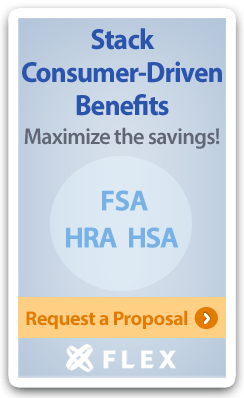Benefits Buzz
Applicable Large Employers and Full-Time Employee Status Calculations
Posted on July 17th, 2015

All eyes are back on the Employer Mandate as expectations of major changes or delays to this provision are quickly fading in light of the King vs. Burwell ruling. Employers and brokers alike are still struggling to understand all the dynamics of this new provision, and that may not come as too much of a surprise as even “simplified, summarized materials” posted by the IRS include more than 50 frequently asked questions and answers about the Employer Mandate. There seems like no better time than now to revisit which employers are subject to the Employer Mandate and which workers are considered full-time employees under the regulation.
Who is an ALE? Employers with an average of 50 or more full-time employees (or a combination of full-time and part-time employees that equals at least 50) on business days in the preceding calendar year are considered applicable large employers (ALEs) and subject to the Employer Mandate. For 2015, the first year the Employer Mandate is in effect, employers can determine ALE status by averaging the number of employees it had in 2014 over as little of a time period as six months provided the months used in the calculation are consecutive. ALE status in future years must be determined using an average across all twelve months of the preceding year.
In some circumstances, an employer may average 50 or more full-time employees during the preceding year, but they will not be considered an ALE. This situation occurs when an employer’s workforce exceeds 50 employees for 120 or fewer days during the preceding year, and the employees in excess of 50 during this time period are seasonal employees. There is also transition relief in 2015 available for an ALE with 50-99 employees (refer to Q&A #34).
Who is a full-time employee? The Employer Mandate rules use 30 hours of service per week or 130 hours of service per month as the definition of a full-time employee. Hours of service refers to the amount of hours in which an employee was paid and not necessarily the amount of hours they actually worked, and thus paid vacation and sick time would be included in calculating the hours of service.
The requirements of the Employer Mandate provide that ALEs must offer minimum essential coverage to all full-time employees, and the coverage must provide minimum value (60% rule) and be considered affordable (9.5% rule) to all full-time employees to guarantee that no financial penalties apply. Employers that fail to do this for all full-time employees open the door up for potential penalties which vary depending on the number of full-time employees who are offered coverage and whether the coverage is affordable and has minimum value.
Some employers have employees who provide varying hours of service, and they move back and forth between part-time and full-time status. Employers have two options in assessing full-time employment status. They can use a monthly measurement method whereby employment status is calculated every month and eligibility for coverage can change from one month to the next based on hours of service.
Alternatively, employers can use a look-back measurement method whereby the employer analyzes hours of service provided during a previous period to determine eligibility for coverage during a current period. Under this method, employers must use a 3-12 month period, referred to as a measurement period, to track hours of service provided by each employee. After the measurement period has concluded, employers have up to a 90 day administrative period to evaluate the data that was captured. Any employee that was deemed to provide an average of 30 hours of service per week or 130 hours of service per month would then need to be offered a health plan that was affordable and provided minimum value to guarantee that no penalties would apply. The time period that employees must be offered coverage is referred to as the stability period, and it must be the greater of 6 months or the length of the measurement period to avoid penalties.
Subscribe to this blog or join our mailing list to stay updated on healthcare reform and more with Flexible Benefit Service LLC (Flex).
The materials contained within this communication are provided for informational purposes only and do not constitute legal or tax advice.

